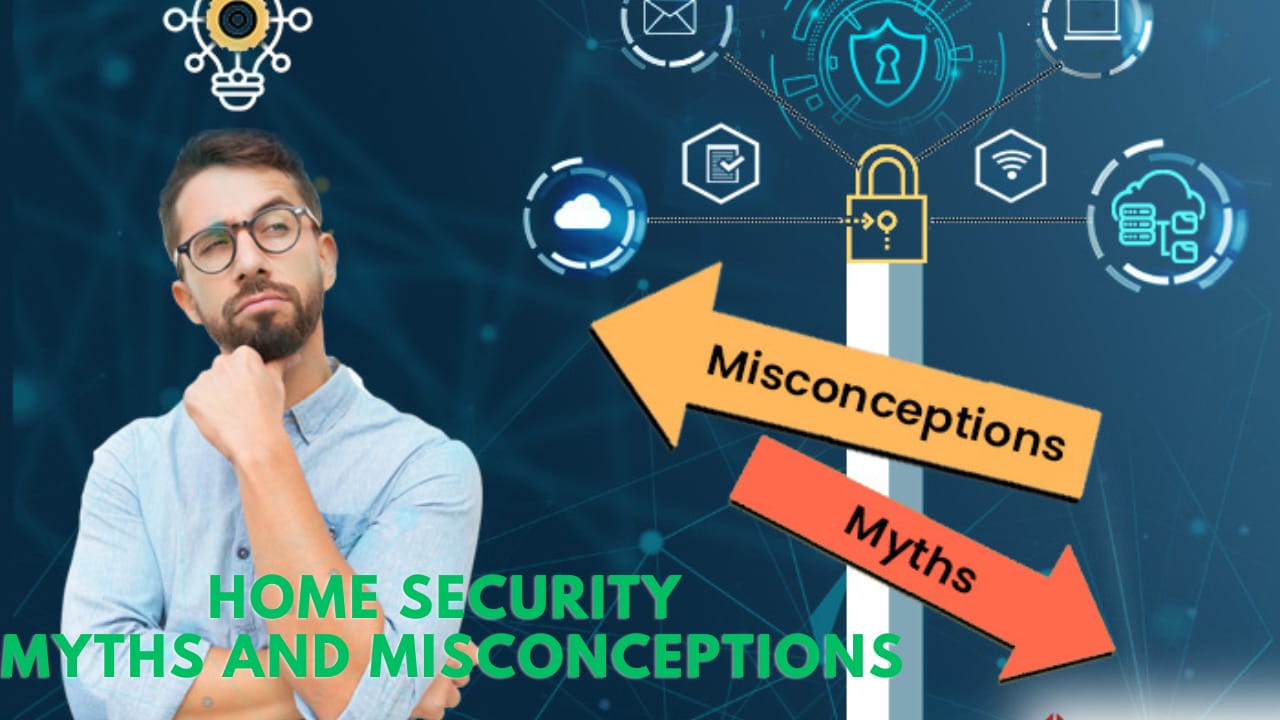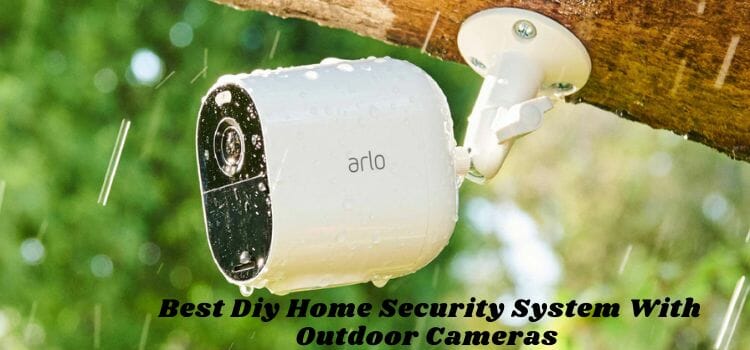How to secure your home from environmental dangers with a security system
Introduction:
As the old adage goes, “an ounce of prevention is worth a pound of cure.” This is especially true when it comes to securing your home from environmental dangers. With the rise of natural disasters, extreme weather conditions, and environmental threats, it’s more important than ever to take proactive measures to protect your home and loved ones. A security system can be a vital component in safeguarding your home from environmental dangers, but it’s not just about installing a system and forgetting about it. In this blog post, we’ll explore the importance of securing your home from environmental dangers with a security system and provide practical tips on how to do it effectively.
Here are four potential subheadings for the blog post:
1- Assessing the Threats: Identifying the Environmental Risks to Your Home
When it comes to securing your home, it’s easy to focus on the obvious threats like intruders and break-ins. However, there are many environmental factors that can also pose a significant risk to your home and family. Understanding these threats is crucial to developing an effective security plan that takes into account the unique risks associated with your specific location.
First and foremost, natural disasters are a major concern for many homeowners. Floods, hurricanes, earthquakes, and wildfires are just a few examples of the devastating natural disasters that can occur. These events can cause significant damage to your home, not to mention the risk of injury or loss of life. For example, if you live in a flood-prone area, you may need to take steps to protect your home from rising water levels, such as installing flood sensors or elevating critical systems.
In addition to natural disasters, environmental hazards like pests and rodents can also pose a significant threat to your home. Pests like termites and carpenter ants can cause structural damage to your home over time, while rodents can spread disease and damage insulation and wiring. In areas prone to wildfires, ash and soot can damage roofs and gutters, leading to costly repairs.
Climate change is also playing a significant role in shaping the environmental risks faced by homeowners. Rising temperatures and changing weather patterns can lead to more frequent and intense weather events, making it more important than ever to be prepared. For example, homes in areas prone to heatwaves may need to be equipped with cooling systems or shaded windows to reduce heat gain.
Finally, environmental pollution is another important consideration for homeowners. Air pollution from nearby industrial sites or traffic congestion can exacerbate respiratory issues, while contaminated soil or water can pose health risks. In areas prone to pollution, it’s essential to take steps to reduce exposure, such as installing air purifiers or using filtered water.
By understanding the specific environmental risks associated with your location, you can take proactive steps to protect your home and family. This may involve installing specialized security measures, such as flood sensors or storm shutters, or taking steps to mitigate the effects of environmental hazards like pests and rodents. By being aware of these threats and taking steps to address them, you can ensure that your home is safe and secure for years to come.
2- Protecting Your Home from Natural Disasters: Flood Sensors, Storm Shutters, and More
When it comes to protecting your home from natural disasters, it’s essential to take proactive measures to safeguard your property and family. Floods, storms, and earthquakes are just a few examples of the devastating natural disasters that can occur, causing significant damage to your home and disrupting your daily life. To minimize the risk of damage and ensure your family’s safety, it’s crucial to install specialized security measures designed to mitigate the effects of these disasters.
One of the most effective ways to protect your home from floods is to install flood sensors. These devices can detect rising water levels and alert you and your family in real-time, giving you time to evacuate or take action to protect your home. Flood sensors can be installed in a variety of locations, including basements, crawl spaces, and near water sources.
Storm shutters are another important consideration for homeowners in areas prone to severe weather events. These shutters can help protect your windows from wind-borne debris, reducing the risk of damage and injury. By installing storm shutters on your windows, you can ensure that your home remains secure and intact during extreme weather events.
In addition to flood sensors and storm shutters, there are several other measures you can take to protect your home from natural disasters. For example, installing a backup generator or sump pump can help ensure that your home remains safe and secure during power outages or flooding. Seismic retrofitting can also help reduce the risk of damage from earthquakes by securing heavy furniture and appliances to walls.
Another important consideration is securing your home’s exterior. By installing impact-resistant doors and windows, you can help prevent damage from wind-borne debris and flying glass. Additionally, securing outdoor furniture, plants, and other items can help prevent them from becoming projectiles during strong winds.
Finally, having a comprehensive emergency plan in place is essential for protecting your home and family from natural disasters. This plan should include evacuation routes, emergency contact information, and a plan for communicating with family members during an emergency. By taking proactive measures to protect your home and family, you can minimize the risk of damage and ensure your safety during natural disasters.
3- Environmental Threats Beyond Natural Disasters: How to Secure Your Home from Pests, Rodents, and Other Unwelcome Guests
Environmental hazards such as pests and rodents can pose significant risks to your home and family. These unwanted invaders can cause damage to your home’s structure, spread disease, and even trigger allergic reactions. To mitigate these risks, it’s essential to take proactive measures to prevent infestations and address them promptly when they occur.
One of the most effective ways to prevent pest infestations is to maintain a clean and tidy home. Regularly cleaning up crumbs and spills, storing food in sealed containers, and taking out the trash regularly can help eliminate attractants for pests. Additionally, sealing any cracks or crevices in your home’s foundation, walls, and windows can help prevent pests from entering your home.
Another important step is to identify potential entry points and seal them off. This may involve caulking cracks around windows and doors, replacing worn-out screens, and installing door sweeps or weatherstripping. It’s also essential to keep your home’s yard clean and free of debris, as this can attract pests and rodents.
In addition to prevention measures, it’s crucial to address pest infestations promptly when they occur. This may involve hiring a pest control professional to treat your home for common pests such as termites, ants, and rodents. It’s also important to remove any food sources or clutter that may be attracting pests.
Rodent removal is a critical aspect of pest control, as these rodents can carry diseases such as hantavirus and leptospirosis. To remove rodents, it’s essential to seal any holes or gaps in your home’s foundation, walls, and roof, and then set traps or use repellents to encourage them to leave.
Finally, it’s essential to take steps to prevent pest-related damage to your home. This may involve installing termite barriers or using treated wood products for construction. Regularly inspecting your home for signs of pest activity can also help identify potential issues before they become major problems.
By taking proactive measures to prevent and address pest infestations, you can minimize the risks associated with environmental hazards and protect your home and family from harm. Remember that prevention is key, so regular maintenance and monitoring are essential for maintaining a pest-free home.
4- Integrating Environmental Protection into Your Home Security System: A Comprehensive Approach
In today’s digital age, smart technology has revolutionized the way we live and work. Home security is no exception, with smart devices and systems offering a range of benefits to homeowners. From enhanced security to increased convenience, smart technology can help protect your home and family from potential threats.
One of the most popular smart home security devices is the smart lock. These locks can be controlled remotely using a smartphone app, allowing you to grant access to guests, delivery personnel, or service providers without having to physically hand over keys. Smart locks can also be programmed to alert you if someone attempts to tamper with the lock or if there is an unusual pattern of activity.
Another important aspect of home security is video surveillance. Smart security cameras can be installed indoors and outdoors to provide a comprehensive view of your property. These cameras can be connected to a smartphone app, allowing you to view live footage and receive alerts if motion is detected. Some smart cameras also feature advanced features such as facial recognition, object detection, and night vision.
In addition to smart locks and cameras, other smart home security devices include doorbells with motion detection, motion-sensitive outdoor lights, and smoke detectors that can alert you and emergency services in the event of a fire.
Smart home security systems also offer a range of benefits, including real-time monitoring, automated alerts, and customizable notifications. These systems can be integrated with other smart devices in your home, such as thermostats and lighting systems, to provide a comprehensive and secure smart home experience.
Another advantage of smart home security is the ability to monitor your home remotely. With a smartphone app or web portal, you can check in on your home at any time, receive notifications of any unusual activity, and even control your security devices remotely.
Finally, smart home security devices can also provide valuable insights into your home’s behavior and habits. For example, smart locks can track who enters your home and when, while smart cameras can provide information about the types of visitors you have and when they visit.
By incorporating smart technology into your home security system, you can enhance your sense of safety and security, reduce the risk of burglary or theft, and enjoy greater convenience and peace of mind.
Conclusion:
In conclusion, securing your home from environmental dangers is a crucial aspect of maintaining your family’s safety and well-being. By installing a comprehensive security system that takes into account the unique environmental risks in your area, you can significantly reduce the risk of damage and loss to your property. From flood sensors to storm shutters, there are many ways to incorporate environmental protection into your home security system. By taking the time to understand the specific threats you face and implementing measures to mitigate them, you can rest assured that your home is safe and secure from the unpredictable forces of nature. Remember, a well-designed security system is not just a luxury, it’s a necessity in today’s world. By prioritizing your home’s security, you’re investing in your family’s future and peace of mind.



